Legbar chickens are a popular breed known for their unique characteristics and beautiful blue-colored eggs. Dive into the ultimate guide to raising Legbar chickens, covering every aspect of care, breeding, and farming practices. Explore the best feed options, egg production tips, and coop designs.
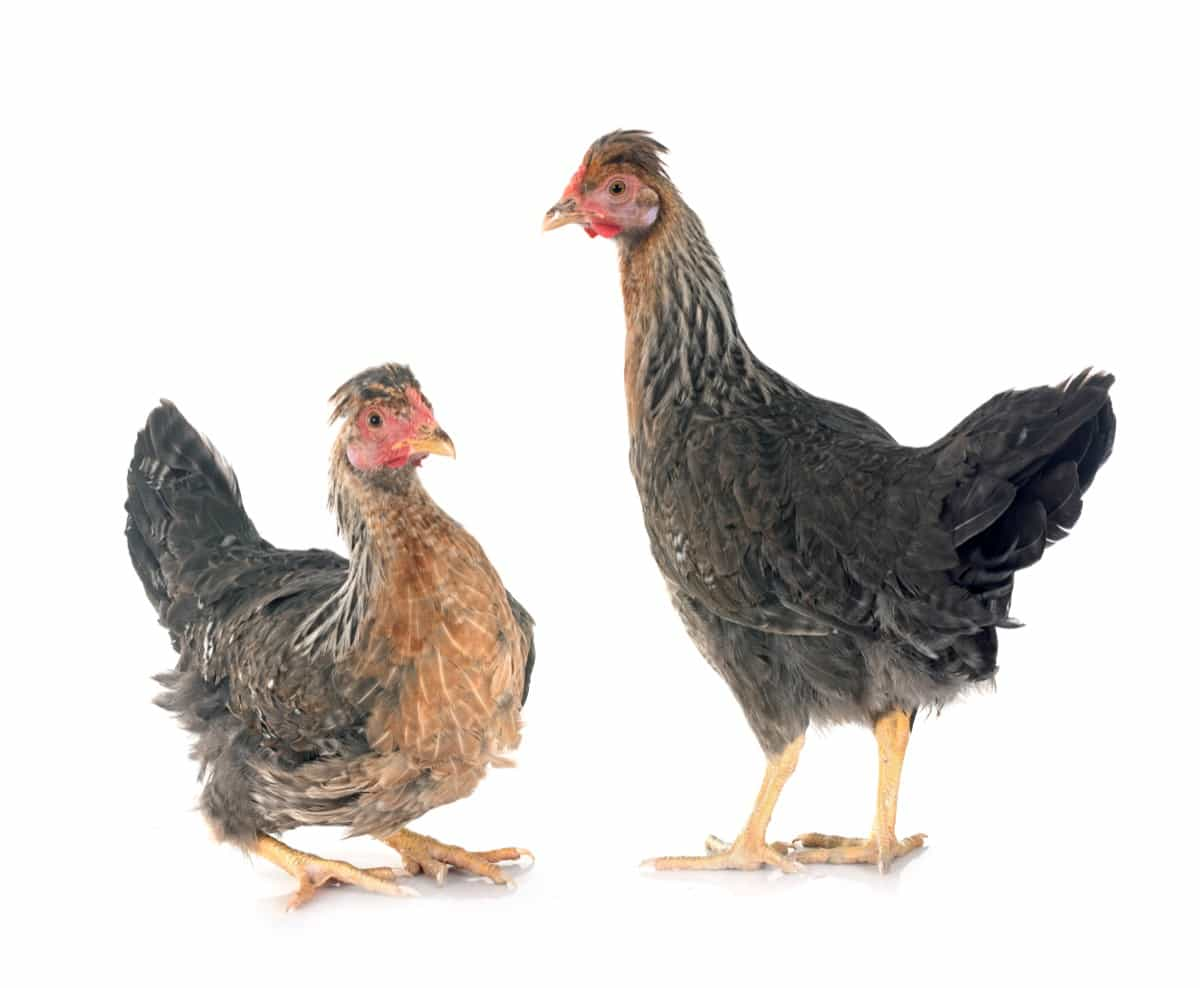
Learn about health considerations, vaccinations, and nutrition for optimal growth. Discover the charming characteristics and egg colors of Legbars, along with seasonal care tips. From predator-proofing coops to organic feed options, this comprehensive guide ensures successful backyard Legbar chicken keeping to all requirements.
Raising Legbar Chickens
History and Origin
Legbar chickens were developed in the early 20th century by Reginald Crundall Punnett and Michael Pease at the Genetical Institute of Cambridge University. The breed was created by crossing with Brown Leghorns, Barred Plymouth Rocks, and Araucanas, resulting in a unique combination of traits. Legbars were primarily bred for their ability to lay blue or blue-green eggs, as well as their attractive appearance and friendly temperament.
Breed Overview of Legbar Chickens
Legbar chickens are a rare breed of chickens that can be easily sexed at birth by their feather color. They were created in the UK in the 1930s by crossing brown Leghorn, Barred Plymouth Rock, and Araucana chickens. Legbar chickens come in three color varieties: gold, silver, and cream. The cream Legbar has a crest and lays blue or green eggs, while the other two varieties have white or cream eggs.
Legbar chickens are medium-sized birds that weigh about 5.5 pounds for hens and 7.5 pounds for roosters. They have single combs, blue earlobes, and yellow or light willow legs. Legbar chickens are friendly, curious, and active birds that enjoy foraging and free-ranging. They are also good layers of about 180 eggs per year. Legbar chickens are a beautiful and productive breed that can add some color and diversity to your flock.
Characteristics of the Breed
Legbar chickens are medium-sized birds with a distinct appearance. They have a well-developed crest on their heads, which adds to their charm. Their plumage is usually creamy or wheaten in color, with some variations, including silver and gold. Legbars have a sturdy build and are known for their active and alert nature. They make excellent free-range birds and are generally docile and friendly towards humans.
In case you missed it: How to Raise Welsummer Chickens: A Comprehensive Guide for Beginners
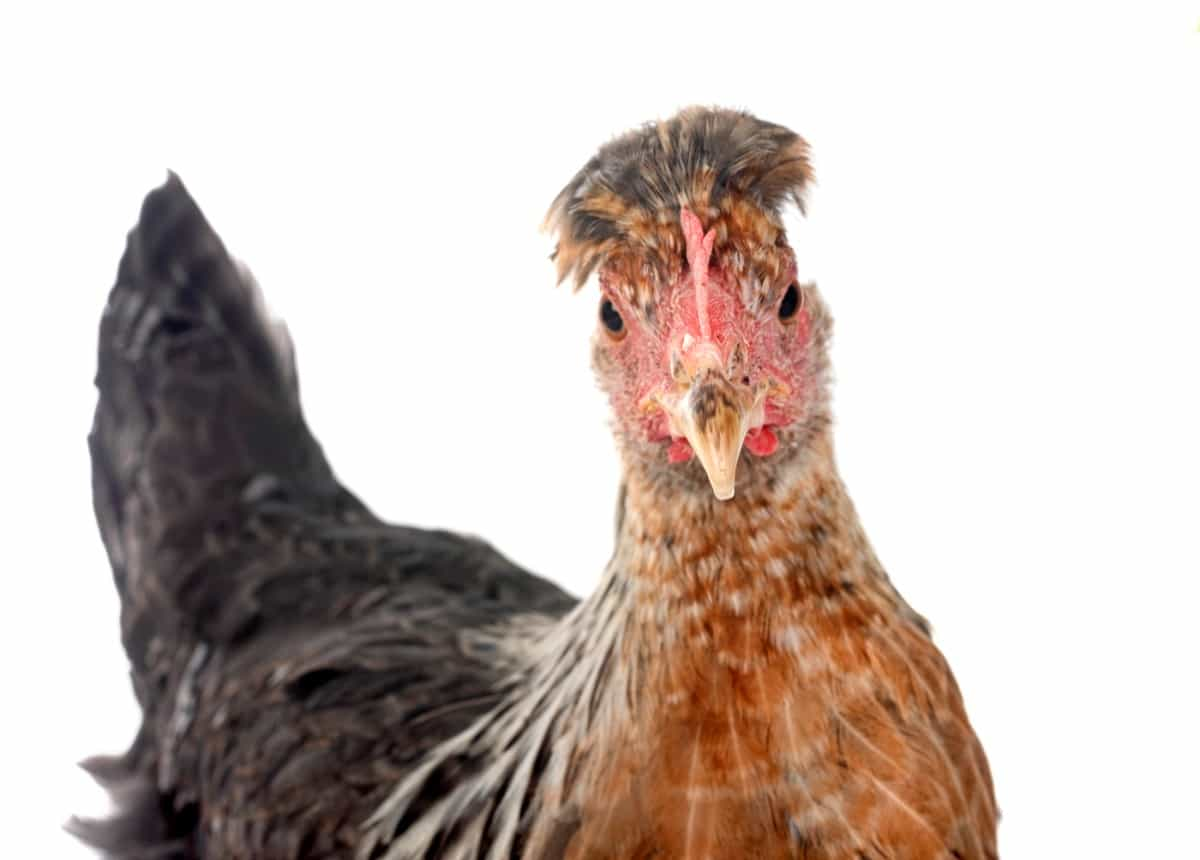
Selecting Your Legbar Chickens
When choosing Legbar chickens for your flock, it’s important to select healthy birds that meet the breed’s standard. Look for birds with bright eyes, clean nostrils, and shiny feathers. Avoid birds which has signs of illness or have abnormalities in their physical appearance. Additionally, consider the specific color variation you prefer, as Legbars come in various shades.
Housing for Legbar Chickens
Providing a suitable housing environment is crucial for the health and well-being of your Legbar chickens. The coop should be spacious enough to accommodate the number of birds you have and allow for easy movement. Ensure proper ventilation, insulation, and protection from predators. Consider incorporating nesting boxes, roosting bars, and a secure fencing system. Regularly clean and maintain the coop to prevent the buildup of bacteria and parasites.
Feeding Legbar Chickens
A balanced diet is crucial for Legbar chickens’ health and productivity. Use high-quality commercial feed containing protein, vitamins, and minerals, supplement with kitchen scraps, fresh fruits, vegetables, and occasional treats. Ensure clean water and avoid toxic or harmful foods, and ensure a constant supply of clean water.
Health and Wellness
Legbar chickens are generally hardy birds, but still be susceptible to certain health issues. Common health problems include respiratory infections, parasites, and egg-related complications. To maintain optimal health, practice good biosecurity measures, provide regular veterinary care, and monitor your flock for any signs of illness. Vaccinations may be recommended to protect against specific diseases prevalent in your area.
Egg Production
One of the main attractions of raising Legbar chickens is their ability to lay beautiful blue or blue-green eggs. Legbars are known for their consistent egg production, with each hen capable of laying around 180-200 eggs per year. To maximize egg production, ensure your hens have a nutritious diet, access to clean nesting boxes, and a stress-free environment. Collect eggs regularly to prevent from damaging.
Breeding Legbar Chickens
Breeding Legbar chickens allows you to preserve and improve the breed’s unique characteristics. Select breeding stock having desirable traits, such as good egg production, sturdy build, and attractive feather coloring. Follow proper breeding practices, including maintaining appropriate breeding ratios, tracking lineage, and ensuring optimal incubation conditions. Understanding the genetics of the breed is important to achieving successful breeding outcomes.
Raising Chicks
Raising Legbar chicks requires special care to ensure their health and successful development. Set up a brooder with appropriate heating, bedding, and feeding arrangements. Provide a balanced chick starter feed and clean water. Monitor their temperature, humidity, and behavior closely. Gradually introduce them to outdoor conditions and transition them to the coop once they are fully feathered, capable of regulating their body temperature.
Handling and Behavior
Legbar chickens have a generally friendly and docile temperament, making them suitable for backyard flocks. Proper handling and socialization from an early age will help them become accustomed to human interaction. Spend time with your Legbars, offer treats, and use positive reinforcement techniques. This will make them more trusting and easier to handle.
Seasonal Care Considerations
It’s important to adapt your care practices to the changing seasons to ensure the well-being of your Legbar chickens. During winter, provide additional insulation, heat sources, and protection from cold drafts. In the summer, provide shade and ample fresh water and ensure proper ventilation in the coop. Monitor your chickens closely during extreme weather conditions and take necessary precautions to keep them comfortable.
Common Challenges
Like any other chicken breed, Legbars may face certain challenges that require your attention and management. Aggression within the flock, establishment of hierarchy, and dealing with bullying behavior are common issues. Monitor flock dynamics, provide adequate space, and separate aggressive individuals if necessary. Regularly check for signs of parasites and implement a parasite control program to keep your Legbars healthy.
Raising Legbar Chickens Tips in Breeding, Farming Practices, Diet, Egg-Production, and Care
Legbar Chicken Care: To thrive, legbar chickens require a suitable housing environment, protection from predators, and proper nutrition. Provide a spacious and secure coop that allows for easy movement and roosting. Implement predator-proof measures such as sturdy fencing, covered runs, and reinforced coop doors. Monitor the health of your Legbars regularly and seek veterinary care if needed.
In case you missed it: Ultimate Guide to Raising Araucana Chickens: Breed Profile, Farming Economics, Diet, and Care
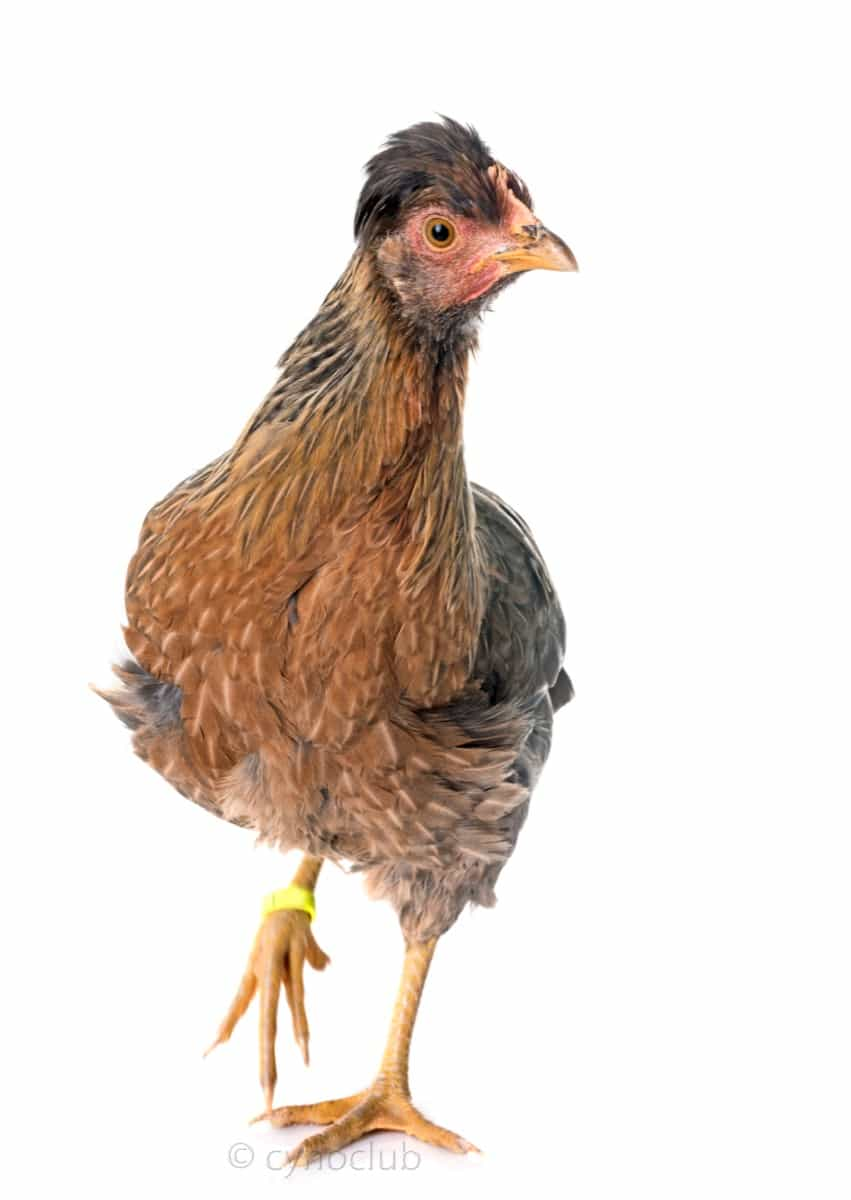
Best Feed for Legbar Chickens: A balanced diet is essential for the health and productivity of Legbar chickens. Provide a high-quality commercial feed specifically formulated for laying hens. Look for feeds that contain the necessary nutrients, including protein, vitamins, and minerals. Additionally, supplement their diet with kitchen scraps, fresh fruits, vegetables, and occasional treats.
Legbar Chicken Coop Design: The design of your Legbar chicken coop plays a crucial role in their well-being and safety. Consider factors such as coop size, ventilation, insulation, and access to nesting boxes and roosting bars. Incorporate features that are easy cleaning and maintenance, such as removable trays and secure latches.
Predator-Proof Chicken Coops for Legbars: Protecting your Legbar chickens from predators is essential to their safety. Implement measures such as burying hardware cloth around the boarder of the coop to prevent digging. Use sturdy fencing and cover the coop’s windows and vents with predator-proof mesh. Consider installing motion sensor lights or sound devices to deter nocturnal predators.
Legbar Chicken Health Issues: While Legbar chickens are generally hardy, they are susceptible to certain health issues. Common health problems include respiratory infections, parasites, and egg-related complications. Practice good biosecurity measures, provide regular veterinary care, and monitor your flock for any signs of illness. Vaccinations may be recommended to protect against prevalent diseases.
Vaccinations for Legbar Chickens: Consult with a poultry veterinarian determine the appropriate vaccinations for your Legbar chickens based on regional disease prevalence. Common vaccinations may include Marek’s disease, Newcastle disease, and infectious bronchitis. Vaccinations can help prevent the outbreak and spread of diseases within your flock.
Legbar Chicken Diet and Nutrition: Legbar chickens have specific nutritional needs to support their growth, egg production, and overall health. Provide a balanced diet that includes a commercial layer feed formulated specifically for laying hens. This feed should contain the necessary protein, vitamins, and minerals. Supplement help their diet with fresh greens, vegetables, and calcium sources such as crushed oyster shells.
Crested Legbar Chicken Characteristics: Crested Legbars are a specific variety of Legbar chickens known for their unique crests or feather tufts on their heads. These crests add to their charm and distinguish them from other Legbar varieties. However, it’s important to note that the crests can sometimes obstruct their vision, so extra care should be taken to ensure their safety and well-being.
Egg Color of Legbar Chickens: Legbar chickens are renowned for their beautiful blue or blue-green eggs. The blue color is a result of a genetic trait inherited from the Araucana breed. The intensity of the blue color can differ among individual Legbar hens, but it generally adds a unique, visually appealing touch to their egg production.
In case you missed it: Ultimate Guide to Raising Polish Chickens: Breed Profile, Farming Economics, Diet, and Care
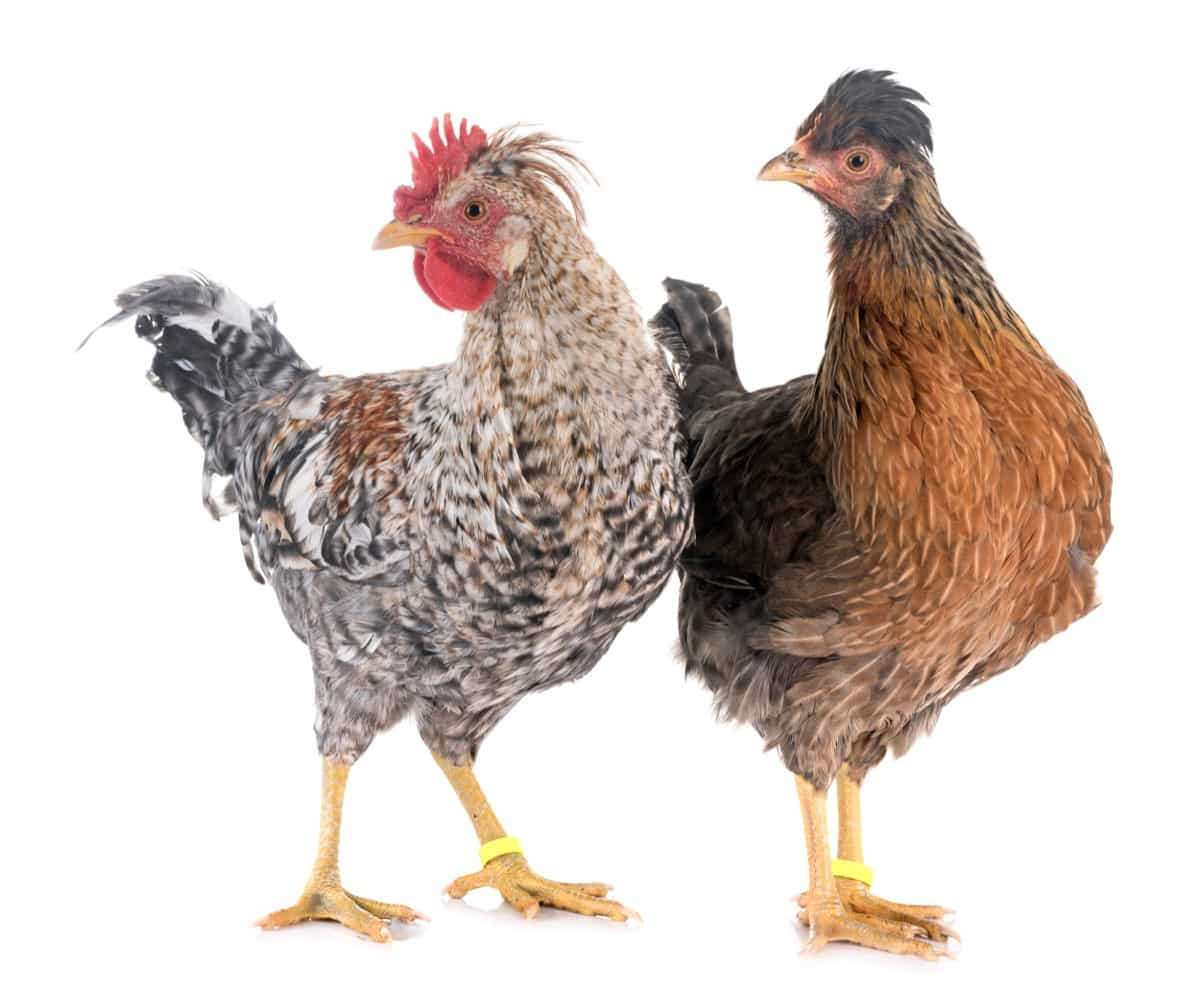
Raising Legbar Chicks: Raising Legbar chicks requires special care and attention to ensure their health and successful development. Set up a brooder with appropriate heating, bedding, and feeding arrangements. Provide a balanced chick starter feed and clean water. Monitor their temperature, humidity, and behavior closely. Gradually introduce them to the outdoor and transition them to the coop once they are fully feathered capable of regulating their body temperature.
Legbar Chicken Temperament: Legbar chickens are known for their friendly and docile temperament, making them suitable for families and backyard settings. They are generally calm, easy to handle, making them a popular choice for children and beginners. However, individual temperaments can vary, so it’s important to handle and socialize them from an early age to ensure their comfort and ease of interaction.
Free-Ranging Legbar Chickens: Legbars are excellent free-range birds and enjoy foraging for insects, worms, and fresh greens. Providing a safe, secure outdoor space for them to roam not only enhances their well-being but also contributes to their overall health, happiness. Ensure that the free-ranging area is predator-proof and offers adequate shelter and shade.
Winter Care for Legbar Chickens: Winter care is crucial to keep your Legbar chickens comfortable and healthy during cold months. Ensure proper insulation in the coop, provide additional heat sources if necessary, and prevent drafts. Use deep bedding to help regulate temperature and provide warm water to prevent freezing. Monitor your chickens for signs of cold stress and adjust their care accordingly.
Summer Management for Legbar Chickens: Summer heat can be challenging for chickens, including Legbars. Provide shade in the outdoor areas, ensure proper ventilation in the coop, and offer fresh, cool water at all times. Consider using misters or fans to provide additional cooling. Monitor your chickens for signs any heat stress, such as panting or lethargy, and take necessary measures to keep them cool.
Watering Systems for Legbar Chickens: Access to clean, fresh water is for the health and well-being of Legbar chickens. Consider using nipple waterers or automatic water systems to provide a constant supply of water. Regularly clean and maintain the waterers to prevent bacterial growth. Ensure that the waterers are easily accessible to all chickens, especially during hot weather.
Legbar Chicken Dust Bathing Areas: Dust bathing is a natural behavior for chickens and helps keep their feathers clean and free from parasites. Provide a designated area in the coop or outdoor run for your Legbars to engage in dust bathing. Use fine sand or dusting material such as wood ash or diatomaceous earth to create a suitable dust-bathing spot.
DIY Legbar Chicken Coop Plans: If you prefer to build your coop, there are numerous DIY plans available online. Consider factors like size, materials, and design features. Ensure that the coop meets the specific needs of Legbar chickens, including proper ventilation, nesting boxes, and roosting bars.
Legbar Chicken Molting Care: Molting is a natural process in which chickens shed and regrow their feathers. Legbars usually undergo molting once a year. During this time, provide additional nutritional support by offering high-protein feed or supplements to aid in feather regrowth. Monitor your chickens for signs of stress, as molting can temporarily affect their immune system.
In case you missed it: Ultimate Guide to Raising Australorp Chickens: Profile, Farming Economics, Egg Production, Diet, and Care
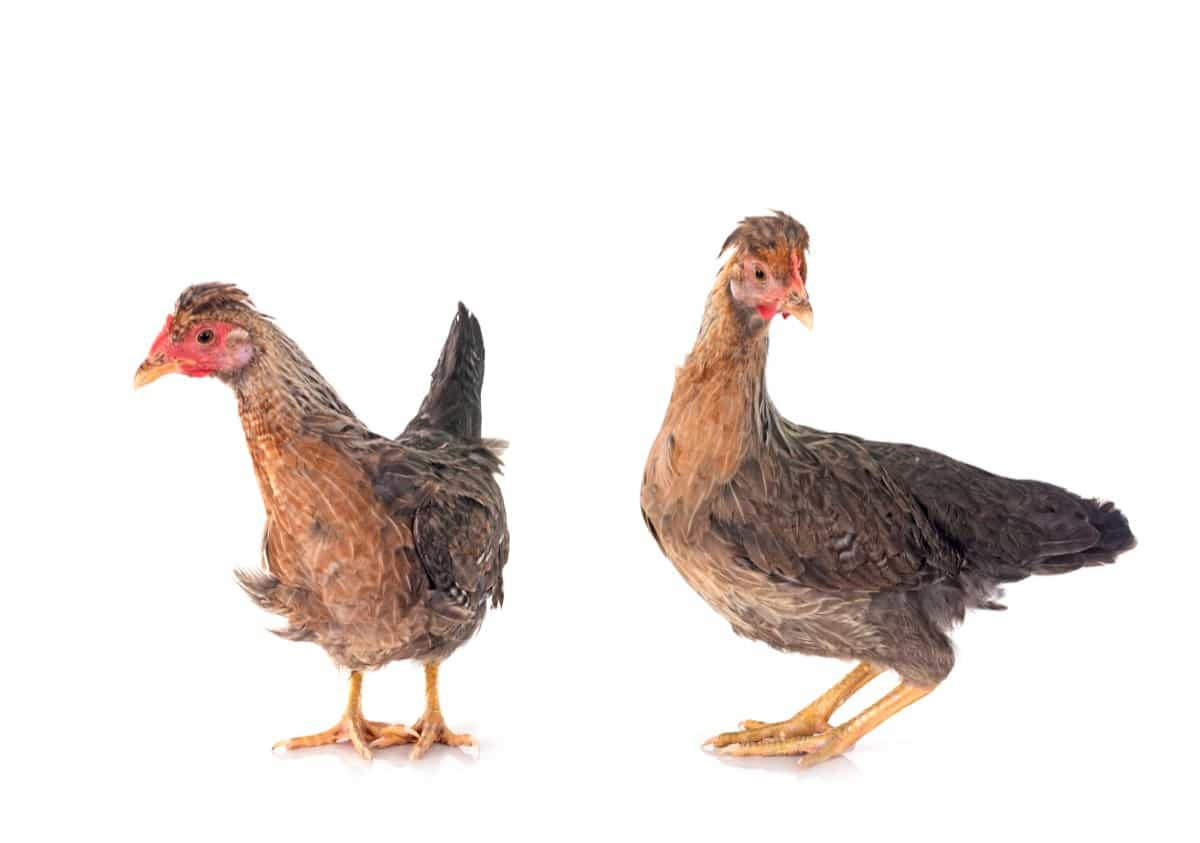
Organic Feed for Legbar Chickens: If you prefer to feed your Legbar chickens organic food, look for certified organic feeds specifically formulated for laying hens. Organic feeds are made from ingredients that have been grown without the use of synthetic pesticides, herbicides, or genetically modified organisms. Ensure that the feed meets the nutritional requirements of Legbars and is certified by a reputable organic certification body.
Legbar Chicken Parasite Control: Parasite control is an important aspect of chicken care. Regularly inspect your Legbars for signs of external parasites such as mites and lice. Implement preventive measures such as regular coop cleaning, dusting with diatomaceous earth, and providing clean bedding. Consult with a poultry veterinarian for specific recommendations on parasite control products and practices.
Backyard Legbar Chicken Keeping: Legbar chickens are well-suited for backyard keeping due to their friendly temperament and attractive appearance. Before starting a backyard flock, familiarize yourself with local regulations and any specific legal requirements for keeping chickens. Ensure that your property has adequate space and appropriate zoning, and consider the well-being of your neighbors.
Legbar Chicken Legal Requirements: Check with your local authorities, homeowner’s association, or agricultural extension office to understand the legal requirements for keeping Legbar chickens in your area. Some regions may have restrictions on the number of chickens allowed, coop placement, or zoning regulations. Complying with these requirements ensures a harmonious and legal chicken-keeping experience.
In case you missed it: Sussex Chicken Farming: Raising Practices, Varieties, Egg Production, Diet and Care
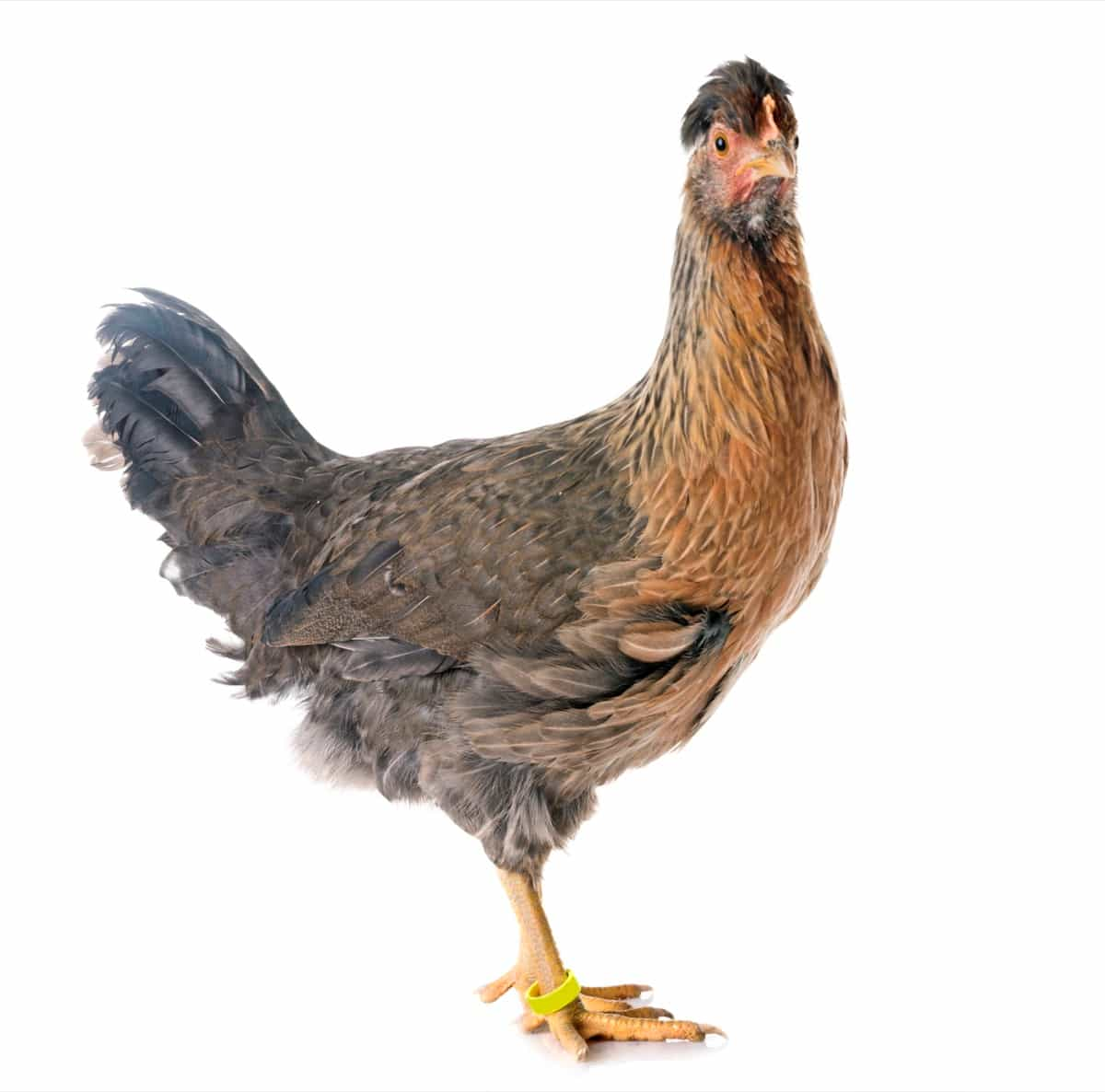
Conclusion
Raising Legbar chickens can be a rewarding and enjoyable experience. By providing proper care, nutrition, and housing, you can raise healthy Legbars and enjoy their beautiful blue eggs. Remember to monitor their health regularly, provide a safe environment, and consult with poultry experts or veterinarians for specific guidance. With proper care and attention, your Legbar chickens to your backyard flock.
- Types of Pesticides Used in Agriculture: A Beginner’s Guide
- Economical Aquaculture: A Guide to Low-Budget Fish Farming
- 15 Common Planting Errors That Can Doom Your Fruit Trees
- How to Make Houseplants Bushy: Effective Tips and Ideas
- Innovative Strategies for Boosting Coconut Pollination and Yield
- Pollination Strategies for Maximum Pumpkin Yield
- The Complete Guide to Chicken Fattening: Strategies for Maximum Growth
- Natural Solutions for Tulip Problems: 100% Effective Remedies for Leaf and Bulb-Related Issues
- Revolutionizing Citrus Preservation: Towards a Healthier, Greener Future
- Natural Solutions for Peony Leaf and Flower Problems: 100% Effective Remedies
- Maximizing Profits with Avocado Contract Farming in India: A Comprehensive Guide
- Natural Solutions for Hydrangea Problems: 100% Effective Remedies for Leaf and Flowers
- The Ultimate Guide to Choosing the Perfect Foliage Friend: Bringing Life Indoors
- From Sunlight to Sustainability: 15 Ways to Use Solar Technology in Agriculture
- The Ultimate Guide to Dong Tao Chicken: Exploring from History to Raising
- The Eco-Friendly Makeover: How to Convert Your Unused Swimming Pool into a Fish Pond
- Mastering the Art of Delaware Chicken Farming: Essentials for Healthy Backyard Flocks
- 20 Best Homemade Fertilizers for Money Plant: DIY Recipes and Application Methods
- How to Craft a Comprehensive Free-Range Chicken Farming Business Plan
- Brighten Your Flock: Raising Easter Egger Chickens for Beauty and Bounty
- How to Optimize Your Poultry Egg Farm Business Plan with These Strategies
- Subsidy for Spirulina Cultivation: How Indian Government Schemes Encouraging Spirulina Farmers
- Ultimate Guide to Raising Dominique Chickens: Breeding, Feeding, Egg-Production, and Care
- Mastering the Art of Raising Jersey Giant Chickens: Care, Feeding, and More
- Ultimate Guide to Raising Legbar Chickens: Breeding, Farming Practices, Diet, Egg-Production
- How to Raise Welsummer Chickens: A Comprehensive Guide for Beginners
- How to Protect Indoor Plants in Winter: A Comprehensive Guide
- Ultimate Guide to Grow Bag Gardening: Tips, Tricks, and Planting Ideas for Urban Gardeners
- Guide to Lotus Cultivation: How to Propagate, Plant, Grow, Care, Cost, and Profit
- Agriculture Drone Subsidy Scheme: Government Kisan Subsidy, License, and How to Apply Online
- Ultimate Guide to Raising Araucana Chickens: Breed Profile, Farming Economics, Diet, and Care
- Bringing Hydroponics to Classroom: Importance, Benefits of Learning for School Students
- Ultimate Guide to Raising Polish Chickens: Breed Profile, Farming Economics, Diet, and Care
- Ultimate Guide to Raising Australorp Chickens: Profile, Farming Economics, Egg Production, Diet, and Care
- Silkie Chicken Farming: Raising Practices, Varieties, Egg Production, Diet, and Care
- Sussex Chicken Farming: Raising Practices, Varieties, Egg Production, Diet and Care